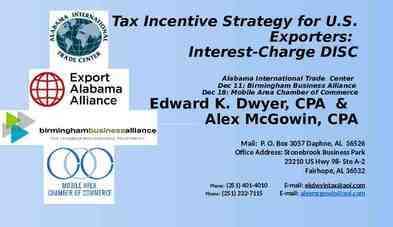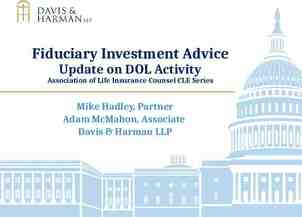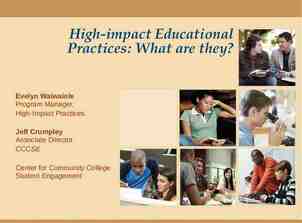Fisk-Vanderbilt Master’s-to-PhD Bridge Program Program Overview
30 Slides7.24 MB
Fisk-Vanderbilt Master’s-to-PhD Bridge Program Program Overview and Admissions
Part 1 Overview
Degrees Earned by Underrepresented Racial and Ethnic Minorities (URMs) Increases in Baccalaureates (17.8% to 24.1%) Increase in Master's Degrees (16.6% to 22.1%) Increases in PhDs (11.1% to 13.6%) Overall nearly 50% increase in URM doctorates awarded (2,247 to 3,351)
Largest change seen in Hispanic/Latinx students
Black or African American Enrollment and Degrees Earned Undergraduate Enrollment from 2016-2018 for Black or African-American students went slightly down (12.4-12.1) Graduate Enrollments of Black or AfricanAmericans or Indigenous students stayed flat.
Earned Doctorates 2019 Broad field of study Life sciences Physical sciences and earth sciences Mathematics and computer sciences Psychology and social sciences Engineering Education Humanities and arts Other non-S&E fields American Indian or Alaska Native 0.3 Asian Hispanic or Latino 11.5 Black or African American 6.0 8.6 More than one race 3.3 0.2 9.4 2.3 6.9 3.6 0.1 14.1 3.9 5.8 3.8 0.4 6.6 8.8 9.4 3.6 0.2 0.7 16.9 5.4 4.2 16.1 7.2 8.3 2.9 2.8 0.3 5.1 4.5 8.5 2.6 0.4 11.0 14.3 6.5 2.1
Earned Doctorates 2019- Physics and Astronomy Field US/PR PhD White Hispanic/Latinx Black or AA Physics 1,062 809 54 11 Astro 251 203 1 0 This problem drove the creation of The Fisk-Vanderbilt Master's to PhD Bridge Program in 2004
What is the Bridge Program? Mission of the program is to increase underrepresented minorities in STEM URM students use the Master's as a "stepping stone" to the PhD Fully funded MS at Fisk in Biology, Chemistry or Physics- which includes Astronomy and Materials Science Students then attempt to “bridge” to Vanderbilt or another PhD granting institution Full program is seven-eight years Small gains in absolute numbers can have a big proportional impact on a national scale
Where is the Bridge Program? Fisk 2 miles Vanderbilt earth.google.com
Who are the Bridge Students? Student Demographics 23% 4% 59% 14% AA His Other NM 59% African-American 24% Hispanic/Latinx 4% Other Minority, including Native American, Native Hawaiian and Pacific Islander 14% White or other nonunderrepresented minority 51% Female and 49% Male
Program Outcomes 120 Master's Degrees Awarded 98 Students moved on to PhD 42 Students have Earned PhD Twice as many fellowships and publish equally to their counterparts 8 CAREER Awards
Core Tenets Build research-based partnerships; joint research as engine of institutional collaboration. (Relationships/Funding) Identify students with unrealized potential; recruit and support “diamonds in the rough” (increasing the talent pool). (Recruiting/Admissions) Continually monitor the “second derivative” of student performance; detect problems and intervene with support early. (Retention/Mentoring) Leverage professional networks; connect students with the broader community for mentorship and research opportunity. (Promotion/Professional Development) (Bridge Program along with Columbia University’s Center for Institutional and Social Change)
Fundamentals of HBCU/PWI Partnership Mutually Beneficial Assest Based Approach Where is the Overlap?
Building Collaborative Research Interdisciplinary AstroMaterials Astronomy Materials Physics AstroInstrumentation Medical Imaging Imaging Center Material Physics Nanoparticle Development and Delivery Chemistry BioMedical Engineering Joint Manuscripts Joint Proposals Committee Service Independent of the Program
Cross Registration Agreement Any Fisk Student can take a Vanderbilt course and any Vanderbilt Student can take a Fisk course with no monetary exchange Fisk rates to Fisk/Vanderbilt Rates to Vanderbilt Credit Transfer Fisk Core Physics Courses (Advanced Dynamics/Quantum 1) 24 didactic hours total can be transferred Portion or All of PhD coursework completed if attending Vanderbilt
Vanderbilt Access for Fisk Students VU NetIDs Vanderbilt Email Journal Access VU ID Cards Building Access Free Bus Transportation Friends of Vanderbilt Parking Passes Office Space Limited access Wellness Center, Career Center and other Student Services No Access to Student Health or University Counseling
How are we funded Grants for the Program primarily to Fund Fisk Students NSF NIH Department of Education Institutional Funds Part of Executive Director Operational Budget 10 Graduate Student Lines Individual and Joint Research Funding
Part 2 Recruiting and Admissions
Recruiting – The Bridge Family
Boots on the Ground Grad School Partnerships with MSIs Emails to McNair Directors Faculty Students Conferences Conferences Invited Talks Institutional Connection Social Media
Admissions Late (and Free) Application Personal Statement, Transcript Review, Letters of Recommendation Don't use traditional quantitative metrics
“A test that fails” Miller and Stassun, Nature 510 (2014) ”The Limitations of the GRE in Predicting Success in Biomedical Graduate School" , Moneta-Koehler et al., PLOS ONE (2017) “Typical physics Ph.D. admissions criteria limit access to underrepresented groups but fail to predict doctoral completion”, Miller et al, Science Advances (201 170 160 155 150 145 140 135 130 125 0 10 20 30 40 50 60 Bridge Students (n 50) Chart Title 60 Yellow Line is average cut off Green line is average for our students Each dot is one student score Physics Subject GRE Percentile Quantitative GRE Score 165 50 40 30 20 10 0 Bridge Students (n 30)
Score Sheets for Application Review Can we serve them? 1-5 in Three Categories Personal Statement Communication Skills Motivation for PhD Long-terms Goals Transcript Background Courses GPA Trajectory Letters of Recommendation Work Ethic Persistence Ownership Total Score that is used to help decide which students will be interviewed
Items of Concern Personal Statement No clear goals Not addressing any gaps in transcript Motivations Transcript Lacks fundamental course Uneven Trajectory Repeated course with little change Letters of Recommendation Only one strong letter No letter from the research advisor Letter looks recycled (he/she)
Interview Interview twice as many as we plan to admit Try to have same 3-4 person group for each interview within a track Two people ask the questions Book 45 minutes for a 30 minute interview Debrief immediately afterwards Cameras Off
Tell us about your research? What did you learn from that experience? Tell us something you are proud of in academics or personal life? (Positive Self Concept) What motivates you to get the PhD and what do you want to do with it? (Long term goals) Give an example of a time you hit a serious obstacle or failure and how you handled it? (Ability to Tolerate Failure) What do you do if you get over your head? (Engage with Resources) What worries you about starting graduate school? (Realistic Self Appraisal) Who do you go to for support or mentorship? (Support Network) What questions do you have for us? (Curiosity/Program Interest)
Items of Concern Can't describe research or can't define the question/significance Has no concerns or is generally overconfident Extrinsic Motivations No goal past the PhD No questions for us



































